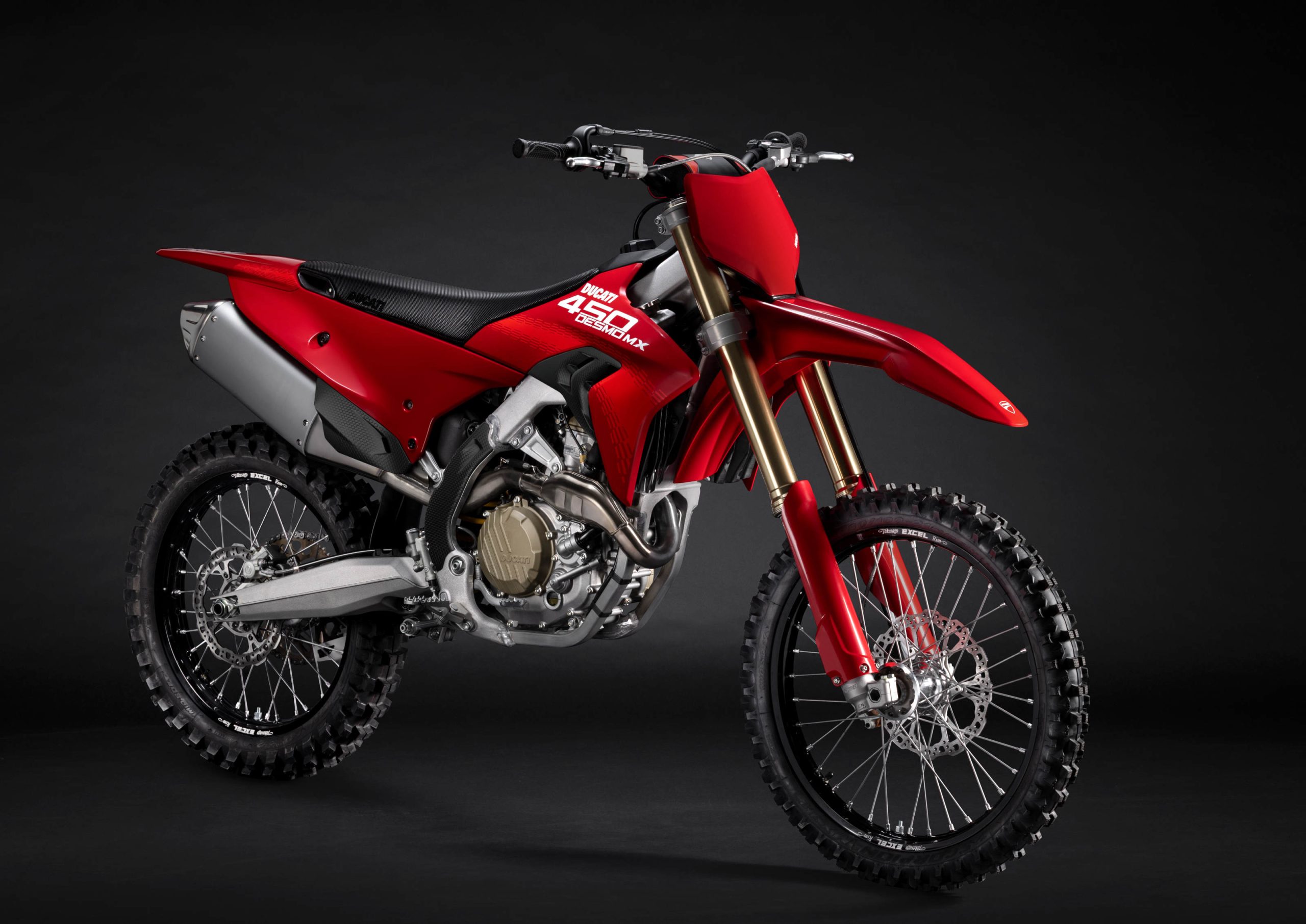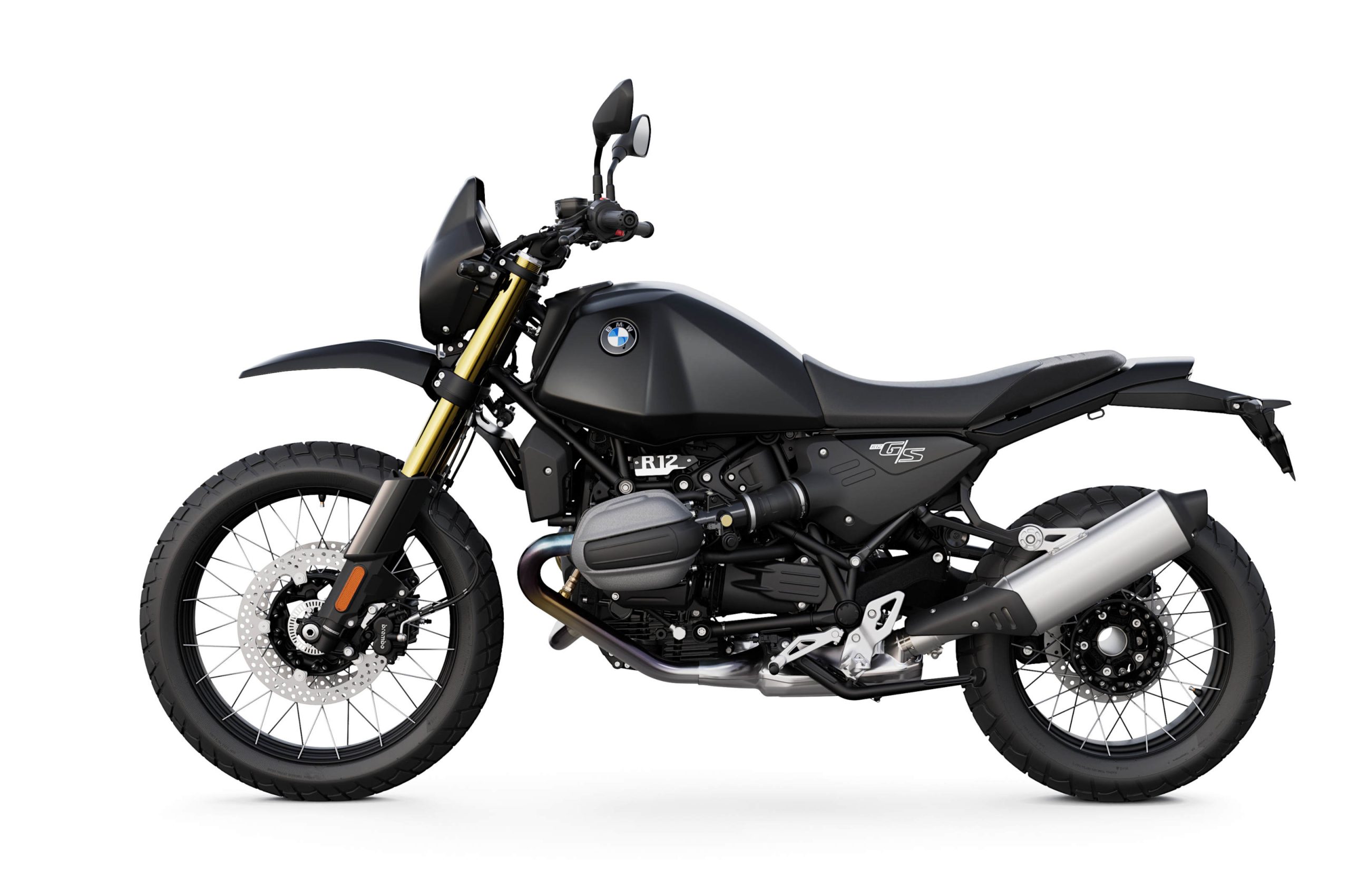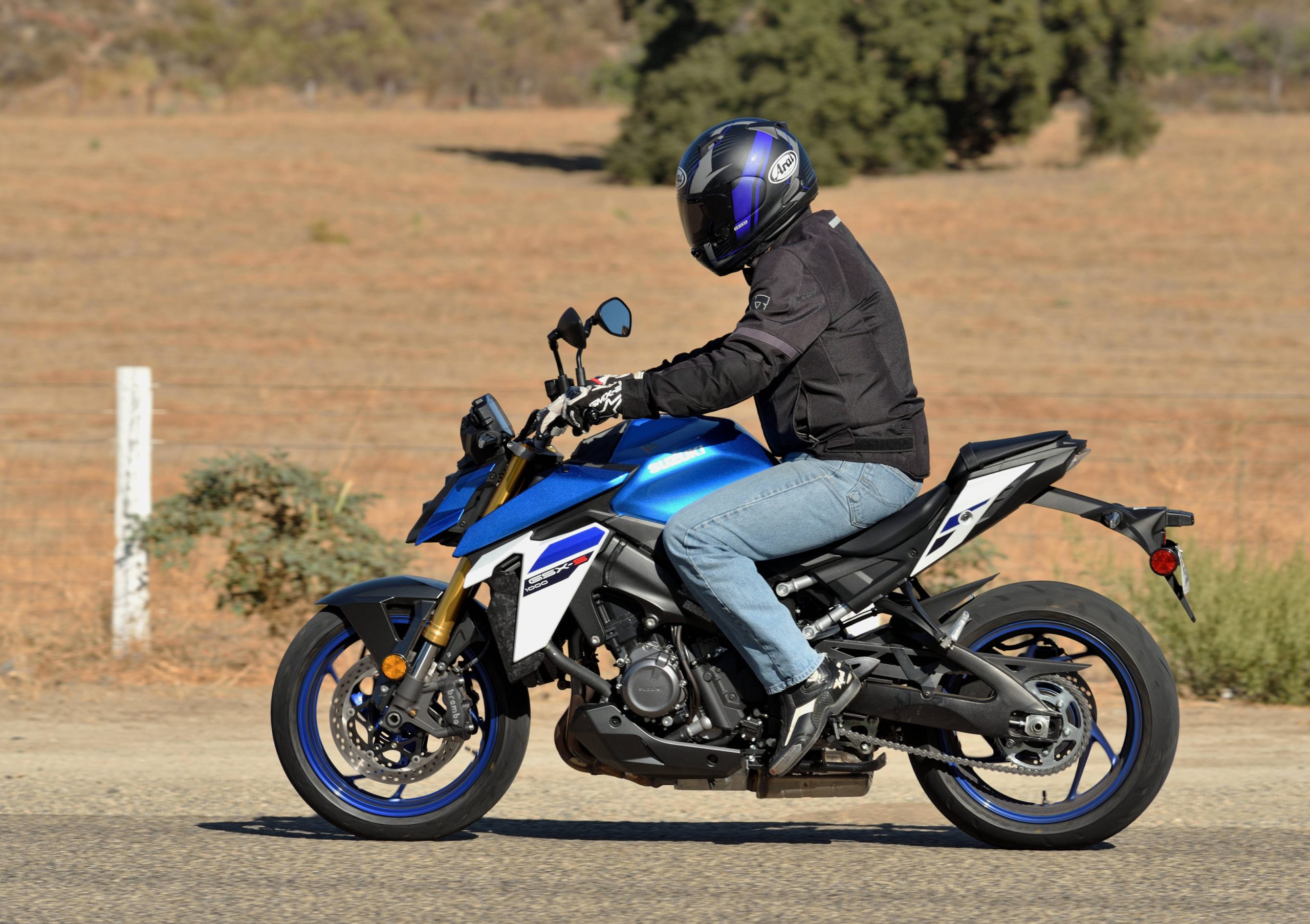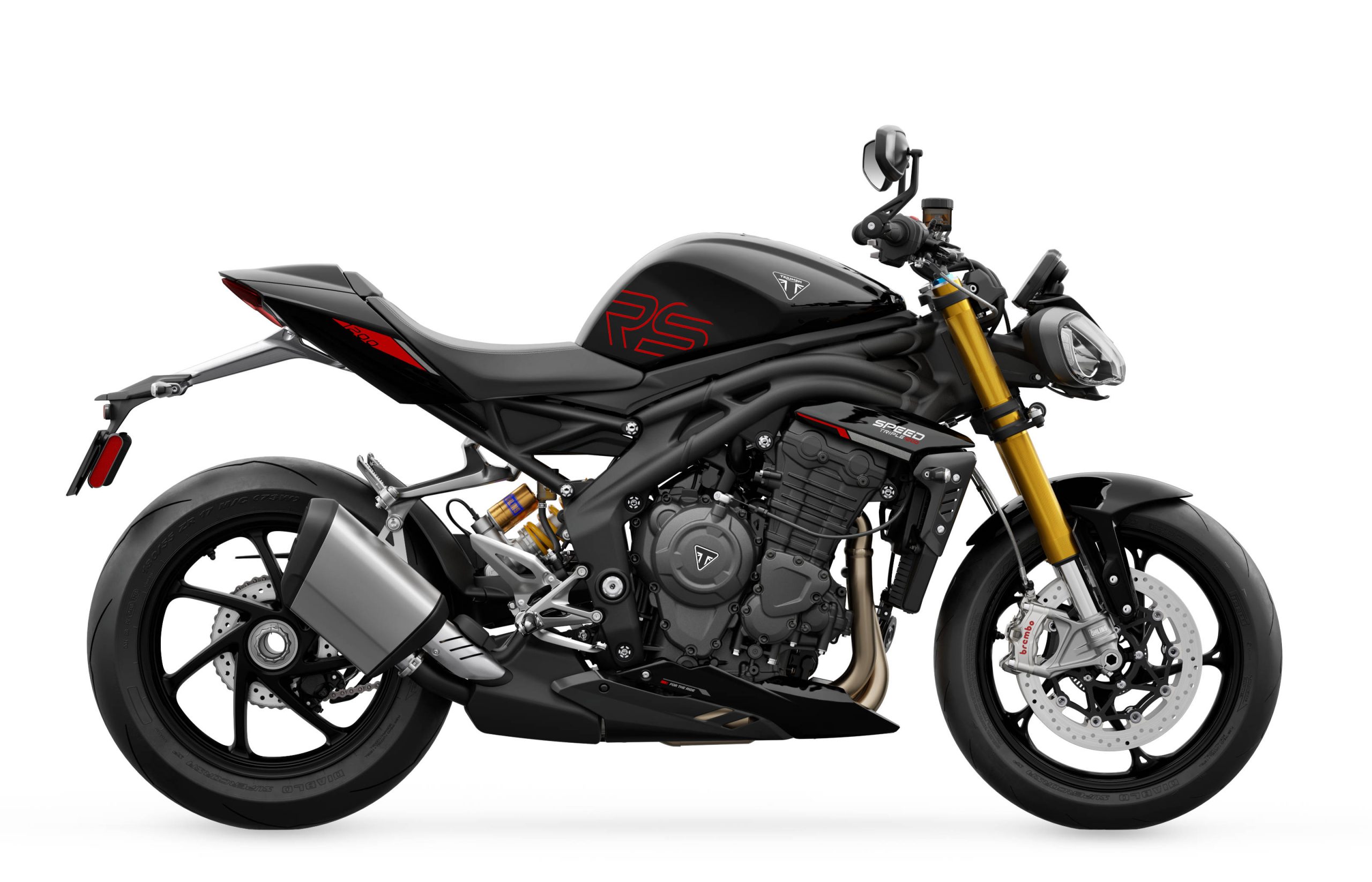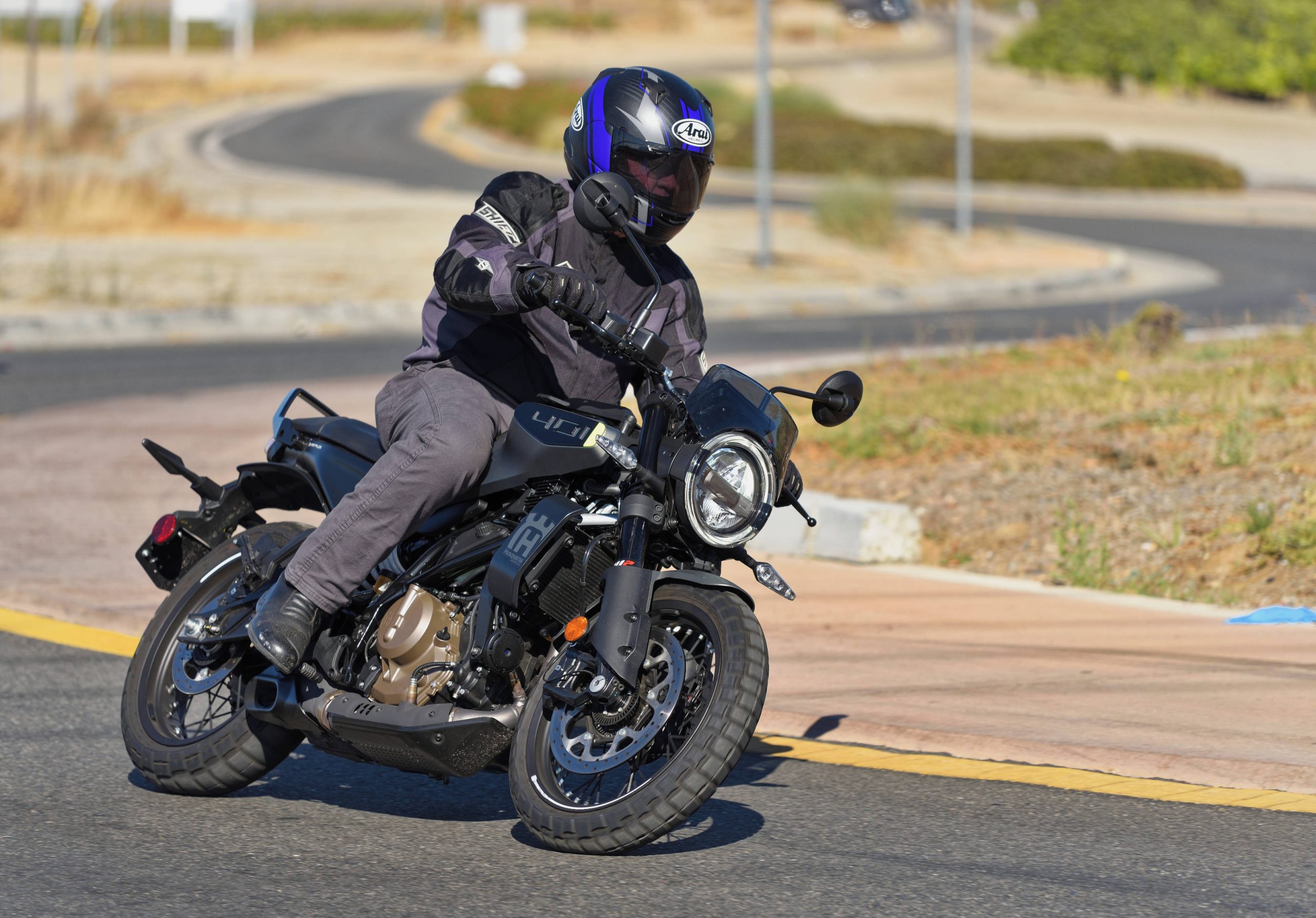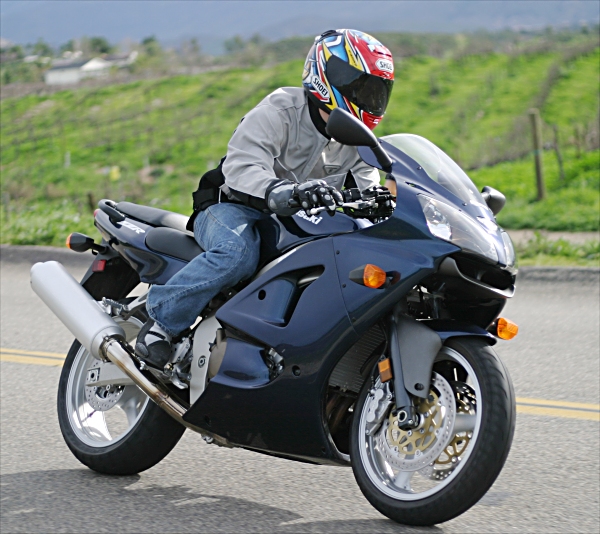
Longtime readers may remember, way back in 2000 and 2001, how we raved about the performance of Kawasaki’s ZX-6R. These days, the ZX-6R has become a big bore (636cc), hard-edged sportbike, and indeed the overall direction of the 600 class has veered further and further towards the racetrack and away from the street. Fortunately for those riders who long for a less-aggressive 600 with the comfort to be used as a sport-tourer, while still being nearly as capable in the twisties as a newer 600, Kawasaki has re-released the previous generation ZX-6R, now known as the ZZR600 (you can read our previous reviews of this bike here, here, and here).
The capabilities of this bike were really highlighted for me since immediately after I finished testing it, I moved on to riding the latest crop of 600s for our 2005 600cc shootout (coming soon!). The first thing I should mention about the ZZR600 is the price – the MSRP is $7199, saving you between $1000 and $2000 over a new 600. With a price like this, you may be surprised to learn that the ZZR does a number of things better than any of the current crop of 600s, and that for many riders it may be a better choice.
After living with the 2005 ZZR600 for a month, and using it for everything from weekend rides through the canyons to freeway commuting, a few things stood out. The first thing you notice about riding the ZZR600 is the comfort. With a wide, well-padded seat, a fairly high handlebar position, and a comfortable distance between seat and footpegs, by today’s sportbike standards, the ZZR feels more like a sport-tourer than a pure sportbike. Indeed, the ZZR seems to give a nearly ideal distribution of body weight between pegs, seat and bars, and for this reason, at least for me, it was even more comfortable on longer rides than many sport-tourers or other bikes with a more upright seating position (which tend to put all you weight on the seat, leading to a rapid case of the dreaded “monkey butt”).
Don’t be misled by the relatively upright seating position and think that the ZZR600 falls short on handling capability, however. Riding at a sane pace on the street, the ZZR can easily run with any of the newer 600s (given riders of equal ability). It may not be quite as light, but unless you are a very experienced rider who likes to ride very fast on the street, you’ll barely notice the difference.
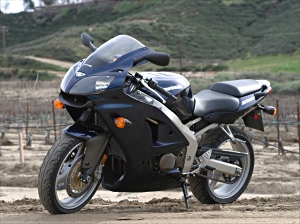
We thought the Kawasaki had excellent brakes back when it was called the ZX-6R, and the name change to ZZR has done nothing to dull their performance. Although they don’t offer quite as much initial bite as the latest generation of radial-mounted superbrakes, the ZZR600’s differential-bore 6-piston calipers and 300mm rotors will deliver all the stopping power you need, and when used aggressively are definitely capable of lifting the rear wheel right off the ground. The rear brake, like that on most modern sportbikes, functioned as intended and went unnoticed as I used it only lightly.
The ZZR600 features a carbureted motor, which is becoming something of a rarity these days. A few years ago this motor was probably the best in it’s class, particularly in the midrange. These days it feels a little down on power compared to the latest-generation 600s, but it is still a very fast bike. Since I have become used to riding the latest fuel-injected sportbikes, the best thing that I can say about the ZZR’s carburation is that, after initial warm-up, I forgot that it was carbureted. The bike ran crisply in all conditions, including some late-night freeway rides with temps so low my lips were numb, and a lot of time in the typical Southern California heat (90+ degrees). I never noticed any unusual responses to throttle inputs, and the transition from off-throttle to on-throttle was as smooth as any fuel-injected bike.
Now that I’ve talked about the handling, the brakes, and the power, let’s get to my favorite part – the headlights. Yes, the headlights. I know that may sound a little weird, but only if you haven’t ridden a ZZR600. If you don’t ride at night very often you may not realize how weak the headlights are on many modern production bikes. This is a problem that crosses all categories – I have ridden very few bikes with truly excellent headlights. The ZZR600 is one of those bikes. The dual-lowbeam/dual-highbeam setup is hands-down the best headlight of any motorcycle I have ever ridden. In fact, riding the ZZR made me wonder why many modern sport-tourers, which should be designed with nighttime riding in mind, don’t have headlights half this good. With the highbeams on, I could ride my favorite twisty roads just as comfortably at night as I could during the day, which is a rare occurence.
My least favorite part of the ZZR600? The lack of a fuel gauge, or even a “low fuel” warning light. Some of you may have been riding for long enough to remember when this was a common situation, but for the rest of you, I’ll tell you how it works. There’s a big switch on the side of the bike which controls the fuel petcock – the settings available are “ON”, “OFF”, and “RESERVE”. If you are smart enough to estimate the bike’s fuel consumption and time your fuel stops using the tripmeter, you may be able to avoid using this switch. Otherwise, you ride the ZZR until the engine starts to cough and sputter, whereupon you immediately reach down and smoothly turn the switch from “ON” to “RESERVE”, and immediately head for the nearest filling station. Unfortunately, it doesn’t always go this smoothly in real life, and the lack of a fuel gauge/warning light is the one thing that holds this bike back from being an excellent sport-tourer.
Yes, I said sport-tourer. The sport-touring category covers a broad range of motorcycles which range from 90% touring/10% sport to 90% sport/10% touring. Every rider is looking for something different from their sport-tourer, and apparently what I was looking for was so different that until I rode the ZZR600 I had yet to find it. Kawasaki’s “budget” 600 turned out to be capable and fun in the twisty bits, while being comfortable and smooth on those long highway rides. I’ve already told you that we gave the ZZR600 high marks when we reviewed it several years ago as the ZX-6R – the only thing that has changed is the price, and at nearly $1000 cheaper this bike is one of the best bargains you’ll find.
I’ve also added the ZZR600 to my “recommend to new riders” list. As a journalist, I am frequently asked “I’m thinking about getting a bike, what should I get?” I have always tried to steer new riders towards Suzuki’s excellent SV650, but I find that some prospective bike buyers (particularly the young, testosterone-fueled kind) are not interested in anything other than a four-cylinder, fully faired sportbike. In that case, I will happily recommend that they save themselves some cash and go with the ZZR600, a bike that will perform just as well for them as any of the new 600s.
As I said earlier in the article, US MSRP for the ZZR600 is $7199. For more info about this bike, go to Kawasaki’s web site here.

